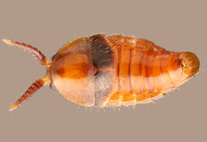Abstract
About 114 “species” of Macrothrichidae, Eurycercidae, and Chydoridae (Cladocera, Anomopoda), belonging to 39 genera, have been reported from China, with 14 species in 6 genera in Macrothrichidae, 2 species in one genus in Eurycercidae, and 98 species in 31 genera in Chydoridae. In total, 203 species in 62 genera, 13 families and 4 orders have so far been reported from the country. Of these, 187 are tentatively considered as valid, while 16 are incertae sedis. In reality, many records hide taxonomic problems that remain to be settled. Up to 10 percent of this fauna might be endemic at the species level, but we expect this number to increase pending new, comprehensive studies. No endemic genera fall to be recorded. Most of the several hundreds of taxonomic or biogeeographic papers from which this information was extracted suffer from poor or outdated taxonomy, such that up to half of all species are up for re-evaluation. Detailed morphological examination, but also provoked male production, especially in chydorids, are ways to improve identifications and should be stimulated. On the other hand, the inventory is certainly still incomplete with several tropical-subtropical taxa still to be expected in China. The extreme south and islands are among promising sites that remain to be explored, as well as extreme habitats all over the country. Molecular studies in China started around the beginning or the present decade, and should be multiplied.

